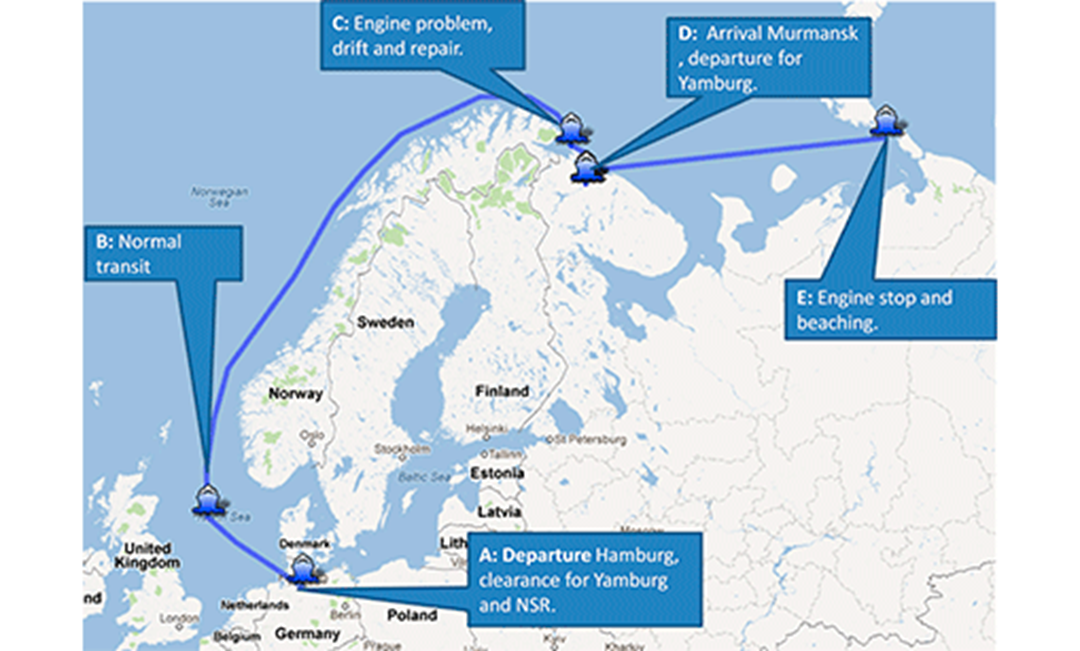SINTEF is collaborating with the University of Tromsø and Akvaplan-niva on a case study that describes a chain of events in a realistic scenario of a ship sailing in northern waters.
The case study describes the transport of 24 containers and a 750-tonne propane compressor module for the Russian gas industry from Hamburg to the Russian port of Yamburg, east of the Yamal Peninsula, aboard a multi-purpose deck cargo carrier. Containers are loaded with equipment, spare parts and 130 tons of chemicals used by the petroleum industry. The timing of the voyage was chosen to be late October to represent harsh sailing conditions in the region, with low temperatures, few hours of daylight and the risk of icing. The type of vessel, its cargo and the route were selected to represent a type of transport that is expected to become more frequent in the Arctic as the exploitation of petroleum resources and other raw materials increases.
The scenario forms the basis for an analysis of technological and environmental challenges associated with shipping in the Arctic. SINTEF has participated in the specification of challenges for the vessel's machinery and the analysis of uncontrolled drift following a complete engine breakdown. The case study is part of the four-year R&D project A-LEX (Regulating Arctic Shipping: political, legal, technological and environmental challenges) funded by the Ministry of Foreign Affairs as a part of the Barents 2020 programme, and is led by the University of Tromsø.

